Introducing Productboard Pulse. Exec-level insights into what your customers need, powered by AI.
Learn more
Product organizations are tasked with the challenging responsibility of developing products that align with customer needs/wants, drive business value and of course look to outshine the competition. With so many tools, methodologies and frameworks available to product managers, it becomes crucial to find the right mix of solutions, to adopt an approach that works best for your team and for your organization. In this blog post, we’ll explore the Shape Up product management process, a unique and effective approach developed by Basecamp that combines agile, lean, and product management principles to deliver successful products. Some of the major steps within the process are outlined below in the following sections.
The first phase in the Shape Up process is “shaping”. This is all about defining the problem or opportunity you want to take on. This involves conducting user research, gathering feedback, and defining the scope and goals of the project. The key is to set boundaries of appetite (Big Batch vs. Small Batch), understand the problem, identify a possible solution and address any risks. This phase culminates in a “pitch,” a presentation of the problem, potential solutions, and proposed timeline. The pitch serves as a blueprint for the entire product development process, providing a shared understanding among team members and stakeholders.
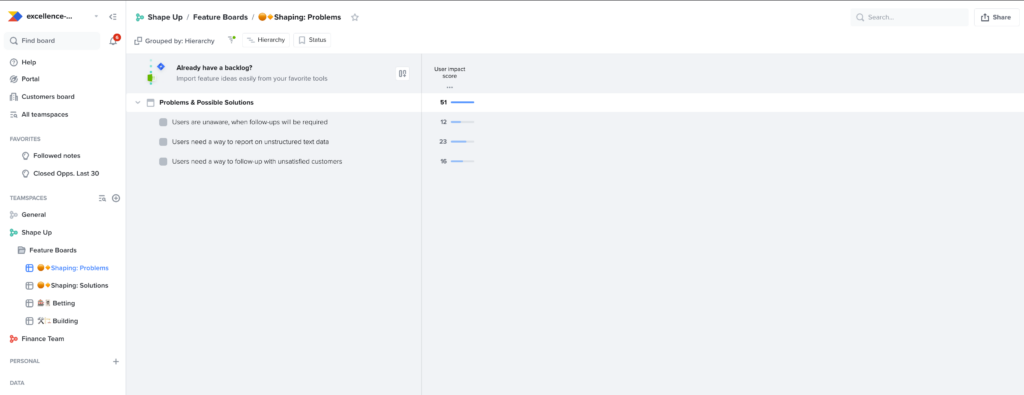
Steps to reproduce view:
Group by hierarchy & Filter on “Problem” feature status
Add column for “User Impact Score” to understand level of importance for customers
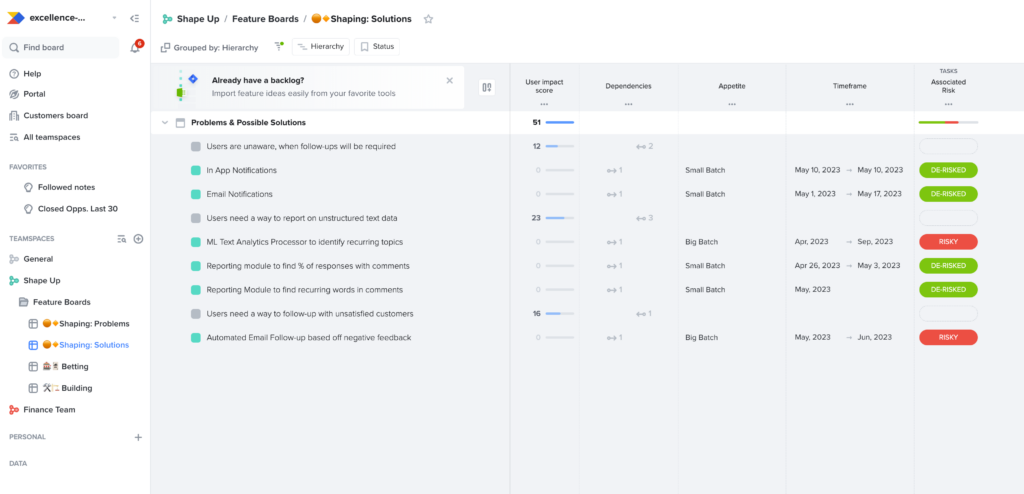
Steps to reproduce view:
Once the pitch is approved, the team then moves into the betting phase. It is at this stage of the process that the team collaboratively defines the scope of work for the upcoming cycle, which is usually a fixed timeframe of 6 weeks. The team members collectively define what will be included in the cycle, and they make “bets” on what can be achieved within the timeframe.
This typically will involve estimating the effort for each task and prioritizing the work, based on alignment to business value, the level of customer impact as well as overall technical feasibility. The betting phase encourages open discussions, shared decision-making, and promotes a sense of ownership among team members.
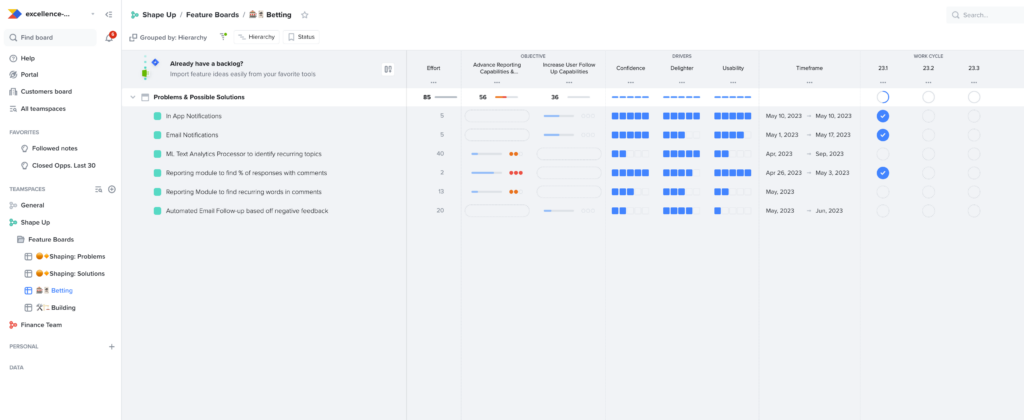
Steps to reproduce view:
Once the scope of work is defined and bets are made, the team then moves into the final phase, referred to as the Building Phase. During this stage specific to product delivery, teams work on building out the features or solutions identified in the betting phase.
It is important that the team maintains autonomy to self-organize and work on the tasks they have committed to. Unlike traditional methodologies, there are no external deadlines or pressure during the cycle, allowing the team to focus on the work at hand without distractions. Ultimately, this helps promote higher levels of creativity, innovation, as well as a sense of empowerment among team members.
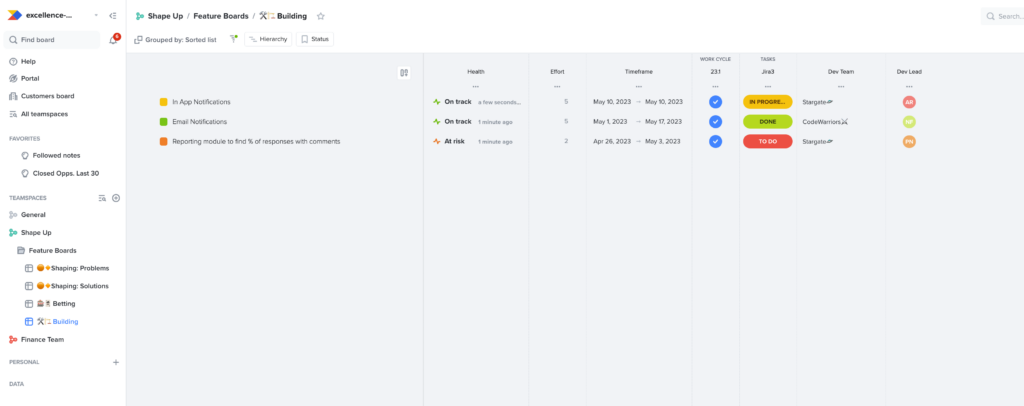
After the features are built, the team can have additional processes to adequately conduct testing of the feature. This is a crucial step to ensure that the built features meet the requirements and quality standards set in the shaping and betting phases. The team conducts thorough testing, reviews the work, and iterates as needed to make sure the product is of high quality and ready for launch. The QA phase ensures that the product is thoroughly checked and validated before moving forward.
Once the features pass through a stage dedicated for QA, they are considered “done” and are ready to be launched. The team coordinates with other stakeholders, such as marketing or customer support, to prepare for the launch. This involves planning and executing the go-to-market strategy, communicating with customers, and monitoring the launch performance. The Shape Up process encourages a customer-centric approach, ensuring that the product is well-received and meets the needs of the target audience.
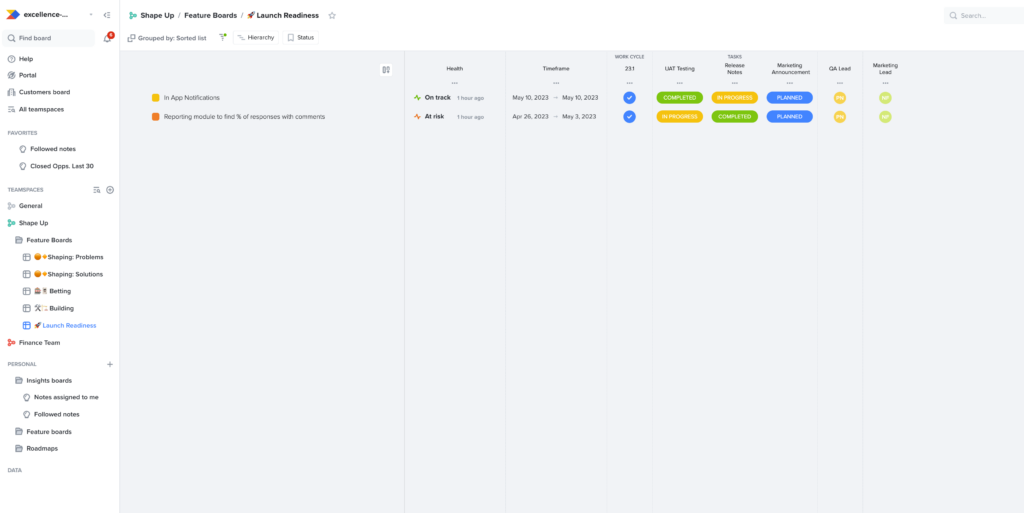
Steps to reproduce view:
After rolling out your features and solutions to your customers, the team enters the post-launch monitoring phase. This involves monitoring the performance of the product, gathering feedback from users, and analyzing the results. By utilizing this feedback the team can make informed decisions regarding any future shaping and betting phases, iterating on the product and continuously improving it based on user needs and market feedback. The post-launch phase ensures that the product remains relevant, competitive, and aligned with business goals.
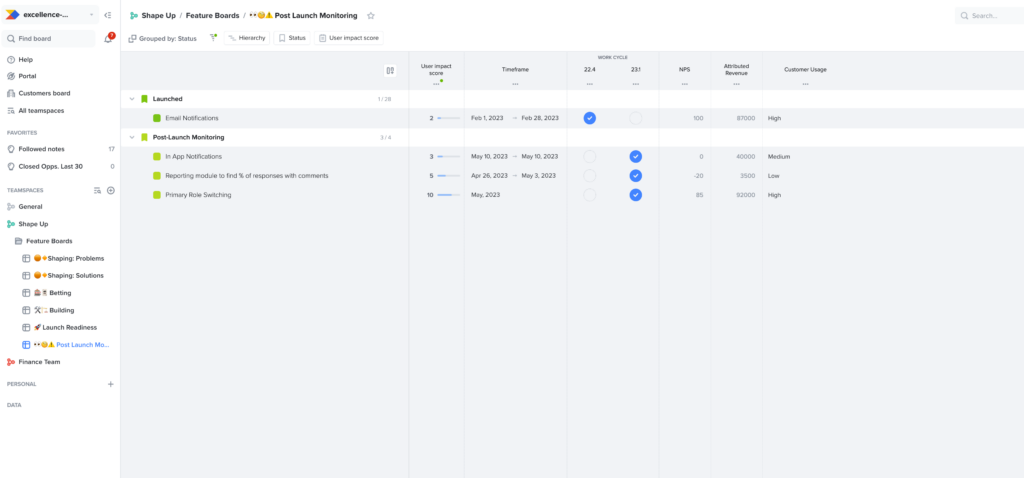
Steps to reproduce view:
The Shape Up product management process is a unique approach that combines agile, lean, and product management principles to deliver effective product development, and when supported by tools like Productboard, teams are ultimately enabled to work better autonomously and collaborate better when required.
